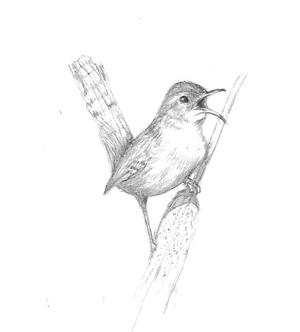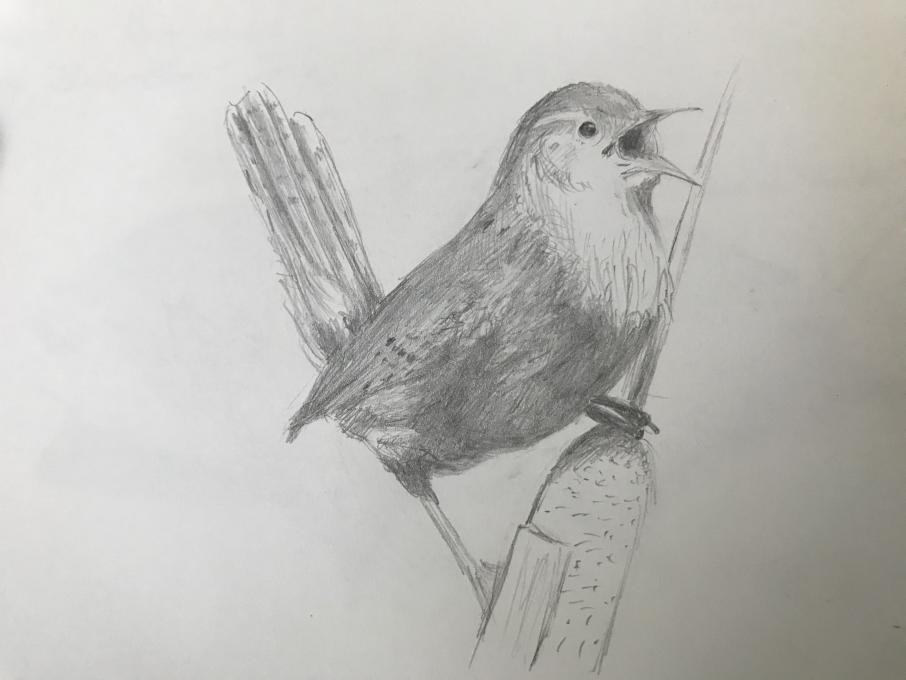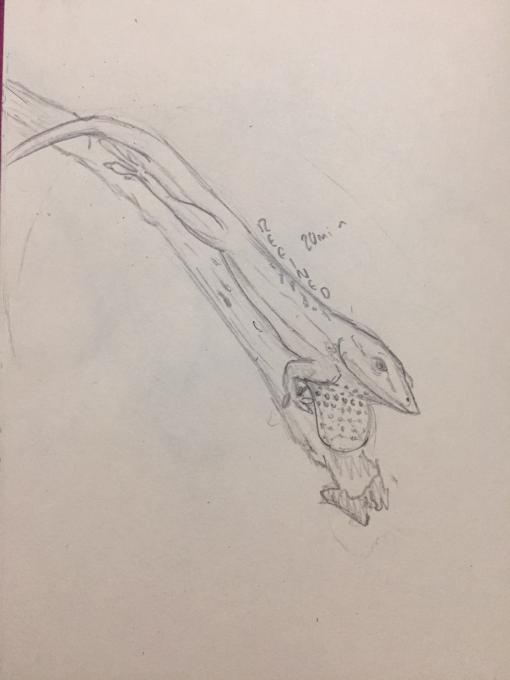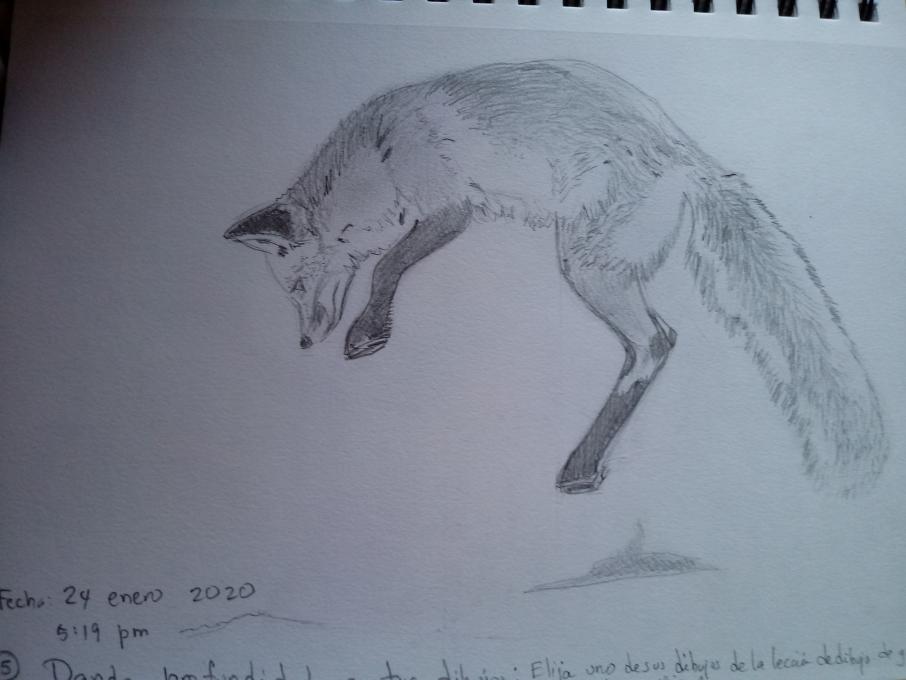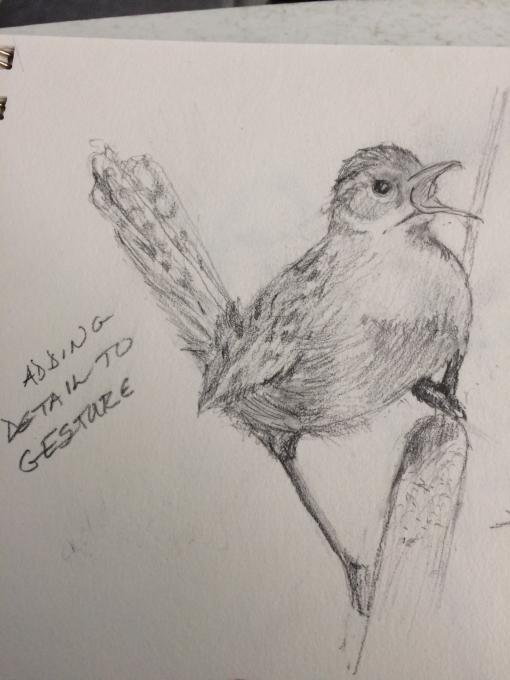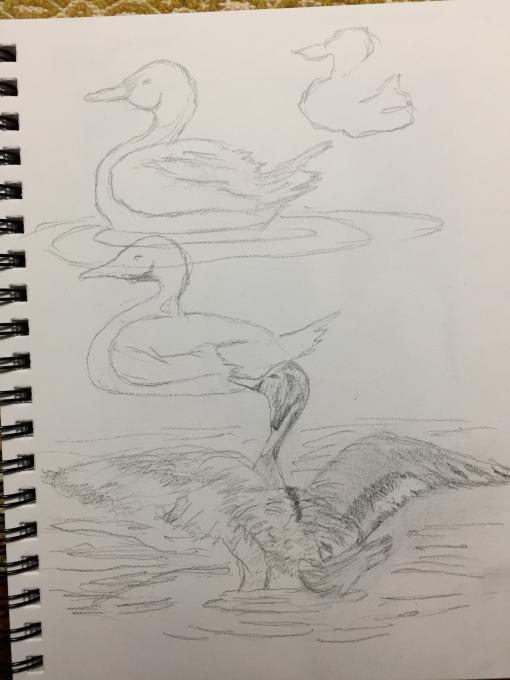The Cornell Lab Bird Academy › Discussion Groups › Nature Journaling and Field Sketching › Giving Your Drawings Depth
-
 I was having a bad day, so I decided an art break was in order! I started from scratch as my original marsh wren was pretty sloppy and it was months ago! I'm not too unhappy with this one, but I've found that I still have trouble creating the idea of looking at something from an angle rather than in profile. As a kid drawing horses, they were always in profile looking right! That's something for me to work on!
I was having a bad day, so I decided an art break was in order! I started from scratch as my original marsh wren was pretty sloppy and it was months ago! I'm not too unhappy with this one, but I've found that I still have trouble creating the idea of looking at something from an angle rather than in profile. As a kid drawing horses, they were always in profile looking right! That's something for me to work on! -
Good use of highlights
-
-
First off my original gesture drawings were a mess. So I retimed myself and tried again. With all the new lessons I am learning they turned out better. Then I worked on refining. I have been using a lot of the negative space training. That has really helped me train my eye for getting the shapes and proportions right. I still can't seem to get the bird mouth exactly right but I am really pleased with my red-eyed tree frog!


-
Gesture drawing was the hardest - I think the clock ticking made me all tense... but it was fun. I still have lots of room to improve on proportions and value. When I went back to refine my drawings, the proportions were often out of whack more often than not, but I found negative space, and judging proportions using the pencil helpful. I just have to remember to use all of these techniques as I draw. These are all new techniques for me, so I ended up spending time in this section just practicing the various techniques that were presented here. I think I will improve as I practice, but I'm going to need a lot of practice for this to come naturally.

-
 Here is my refined drawing. The hardest part was getting the proportions right. I am not sure they are right now, but I am satisfied with the drawing. Short sketchy lines, value, negative space and breaking down the subject helped me capture it. I still need to work on proportions and value.
Here is my refined drawing. The hardest part was getting the proportions right. I am not sure they are right now, but I am satisfied with the drawing. Short sketchy lines, value, negative space and breaking down the subject helped me capture it. I still need to work on proportions and value. -
Here is my refined drawing! I had a lot of fun doing this and it looks so much better! Using negative space and proportions, I was able to get its position and body just right. Adding some texture and shading made it come to life. I feel like I was able to capture it in motion. I love drawing from photographs I always feel like it gives me the time to get the shapes and colors and values just right.

-
 ‘What fun!
‘What fun! -
I went for the roadrunner. A good exercise for proportions. There were only a few negative spaces to support me. Mimicking the stripes and spots was also quite a challenge.

-
It was hard for me because I couldn't find the exact scene that I was drawing, but I tried my best to refine my gesture drawing. I think that it helped that I had a different reference picture instead of none. The technique that has been most helpful for me was the ways that you can shade the drawings because it was useful because the bird that I was drawing had lots of shadows and different colors.
-
 This was a surprising exercise because of the noticeable change from the original. Unfortunately the original has been erased . Using negative space and checking proportions comes most easily. I still have difficulty separating shading from colours.
This was a surprising exercise because of the noticeable change from the original. Unfortunately the original has been erased . Using negative space and checking proportions comes most easily. I still have difficulty separating shading from colours. -
Proportion is still difficult for me and so is shading. Refining from a sketch is very helpful but definitely need a photo to look at.


-
 I am having trouble getting a 3 d look
I am having trouble getting a 3 d look -
I too did the refining from a photo. I'm going to try a bird next. This is a friendly squirrel that loves to pose while eating my bird
 seed.
seed. -
All techinques were helpful. The negative space to set proportions, the stippling to shade the reed, the hatching and contour-hatching to fill the shadows, even the blending for some effect on the back and wing of the Wren. I'm happy with the final result overall.


-
 This is actually two different exercises. The larger sketch was an attempt at proportion, while the more detailed woodpecker (a different species) is an attempt at demonstrating depth. I feel good about the proportion of the smaller drawing. Shading will come, in time. I'm having difficulties concentrating on two different skills at one time.
This is actually two different exercises. The larger sketch was an attempt at proportion, while the more detailed woodpecker (a different species) is an attempt at demonstrating depth. I feel good about the proportion of the smaller drawing. Shading will come, in time. I'm having difficulties concentrating on two different skills at one time. -
Taking a gesture drawing to a refined sketch is not so easy. I found that drawing from a reference photo gives one the opportunity for getting a pretty good drawing as you can use your measuring techniques for putting proper perspective on your drawing and getting negatives spaces accurate makes for a more realistic sketch. I followed Liz's suggestions as she was drawing, then looked at my drawing with blurred vision and tried to get my darkest darks and lightest lights correctly demonstrated.

-
Negative space and relationship, proportion and perspective are very difficult for me. My brain seems to throw a mirror image of what I am looking at. Often my angles are completely reversed of the actual subject. Breaking it down to those elements and revising my original drawing is very helpful - to my eye/brain connection ( which is somewhat impaired I think) as well as to the drawing itself. Practicing copying things upside down is helpful as well. I often draw from memory rather than observation so I have to train my brain to do otherwise.
![IMG_7458[1]](data:image/gif;base64,R0lGODlhAQABAAAAACH5BAEKAAEALAAAAAABAAEAAAICTAEAOw==)
-
 Today’s exercise. I am having some difficulty drawing at such a small scale but getting there. This subject was heavily textured so the texture and the shading techniques were getting mixed up.
Today’s exercise. I am having some difficulty drawing at such a small scale but getting there. This subject was heavily textured so the texture and the shading techniques were getting mixed up. -
I have worked on the marsh wren and here is my refined and detailed drawing. I'm sure as you say that I could keep on adding but this is my newest version.

-

-
So beautiful. I feel like I could look outside my window and find your bird right on the clothesline or the feeder. Bravo!
-
-
Using the gesture drawing to support a more detailed drawing was helpful. By incorporating proportion and negative space As I was drawing allowed me to develop a more accurate sketch of the warbler. Using a variety of marks allowed me to add definition to the form and textures and patterns to the feathers. I am wondering how I would be able to do this without photos. My memory would not permit me to add as much detail as I did here.

-

-

-
Such a nice rendition. The face is intensely focused on the pounce and the shading is wonderful.
-
-
I found starting with the gesture helpful. It provided an anchor from which I could make corrections using the proportion strategy as well as the negative space. I used a variety of marks to define the the texture, direction and value of the feathers. I was able to add so much detail because I had a photo to work from. I can't imagine doing multiple gesture drawings and finding time to take photos but I also can't imagine adding the amount of detail I did using the photo.

-
Working from the gesture was a help. It had laid the foundation for using the drawing techniques. techniques. Using negative space and proportion definitely helped with accuracy. I really enjoyed using a variety of marks to help define the movement , texture and dimensions. I felt successful because I could use the photo along with the gesture to capture this image. I wonder how to get this type of detail during outdoor sketching.

-
How does one know where to shade and highlight when working on a quick gesture that was gone in fractions of seconds? It was okay when I was able to go back and replay and pause the video and see the highlights and shadows that weren’t captured in my sketch, but otherwise, it’s just guesswork.

Read More:
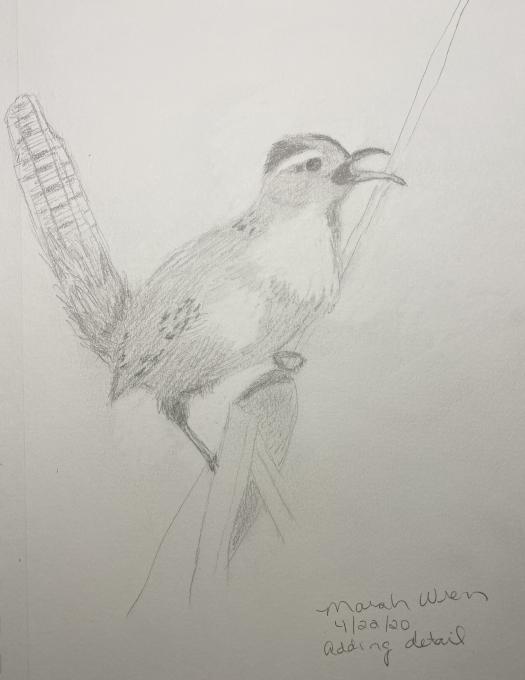 I was having a bad day, so I decided an art break was in order! I started from scratch as my original marsh wren was pretty sloppy and it was months ago! I'm not too unhappy with this one, but I've found that I still have trouble creating the idea of looking at something from an angle rather than in profile. As a kid drawing horses, they were always in profile looking right! That's something for me to work on!
I was having a bad day, so I decided an art break was in order! I started from scratch as my original marsh wren was pretty sloppy and it was months ago! I'm not too unhappy with this one, but I've found that I still have trouble creating the idea of looking at something from an angle rather than in profile. As a kid drawing horses, they were always in profile looking right! That's something for me to work on! 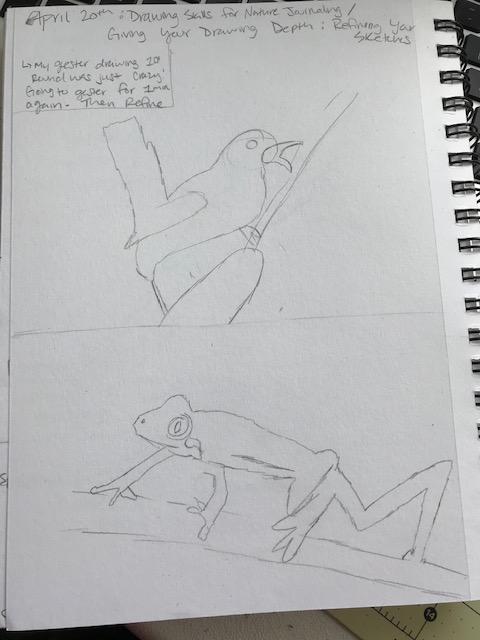
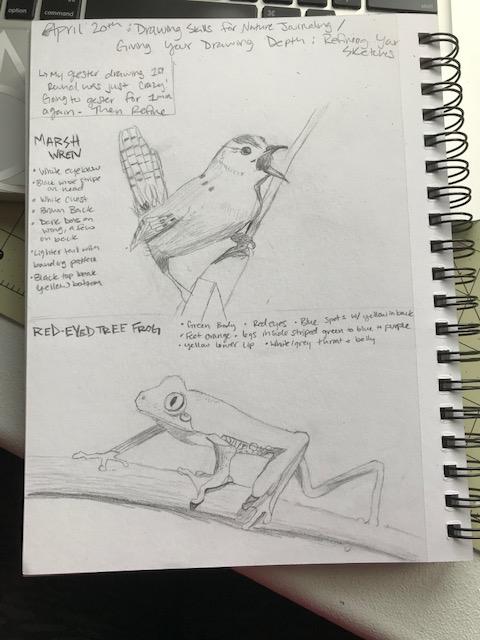

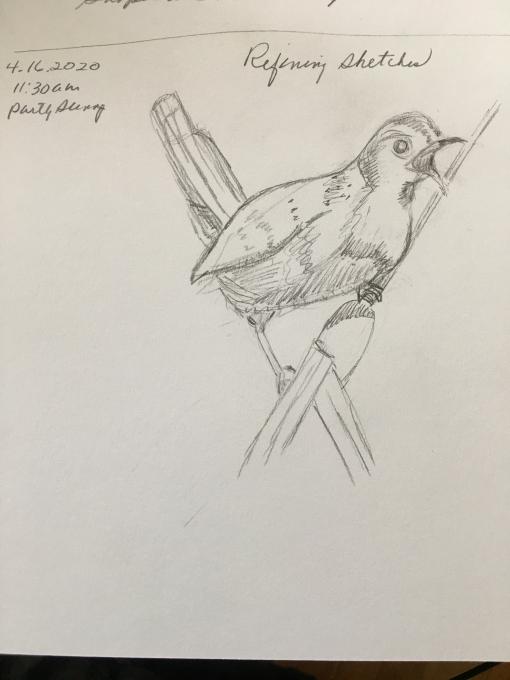 Here is my refined drawing. The hardest part was getting the proportions right. I am not sure they are right now, but I am satisfied with the drawing. Short sketchy lines, value, negative space and breaking down the subject helped me capture it. I still need to work on proportions and value.
Here is my refined drawing. The hardest part was getting the proportions right. I am not sure they are right now, but I am satisfied with the drawing. Short sketchy lines, value, negative space and breaking down the subject helped me capture it. I still need to work on proportions and value. 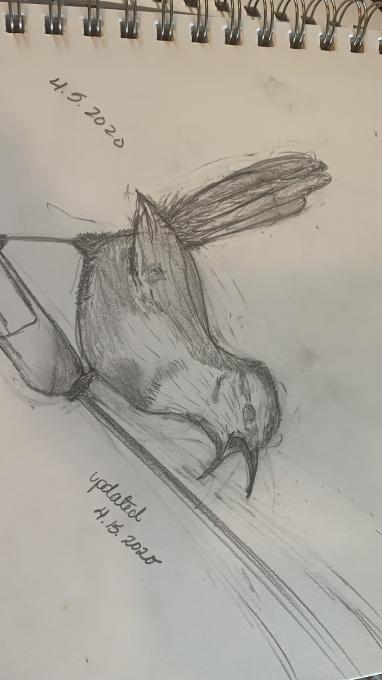
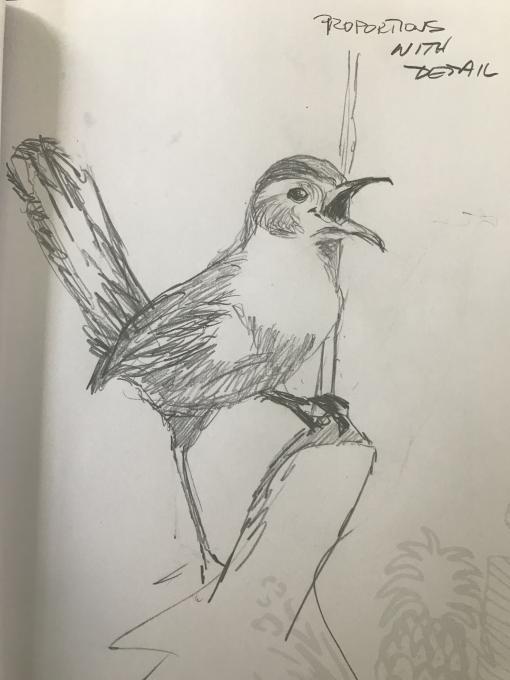 ‘What fun!
‘What fun! 
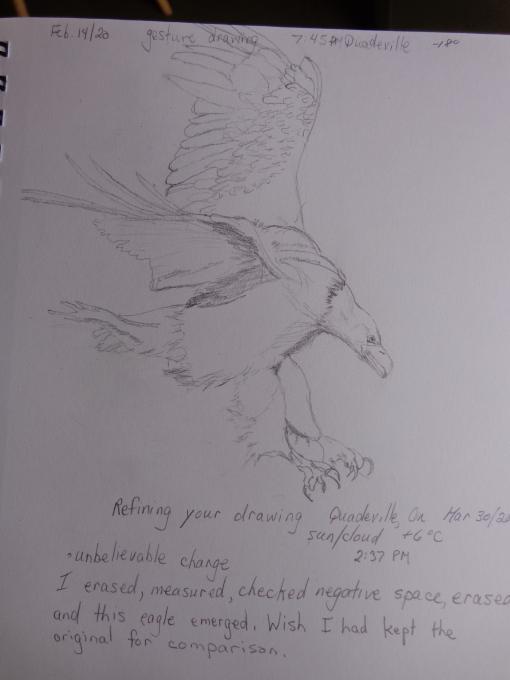 This was a surprising exercise because of the noticeable change from the original. Unfortunately the original has been erased . Using negative space and checking proportions comes most easily. I still have difficulty separating shading from colours.
This was a surprising exercise because of the noticeable change from the original. Unfortunately the original has been erased . Using negative space and checking proportions comes most easily. I still have difficulty separating shading from colours. 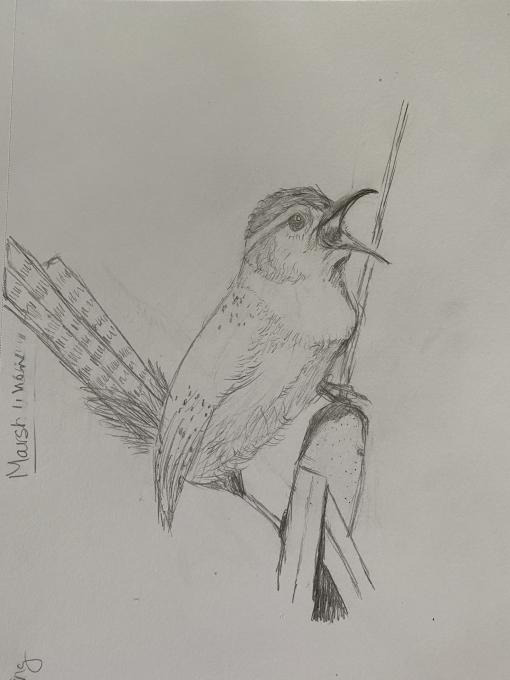

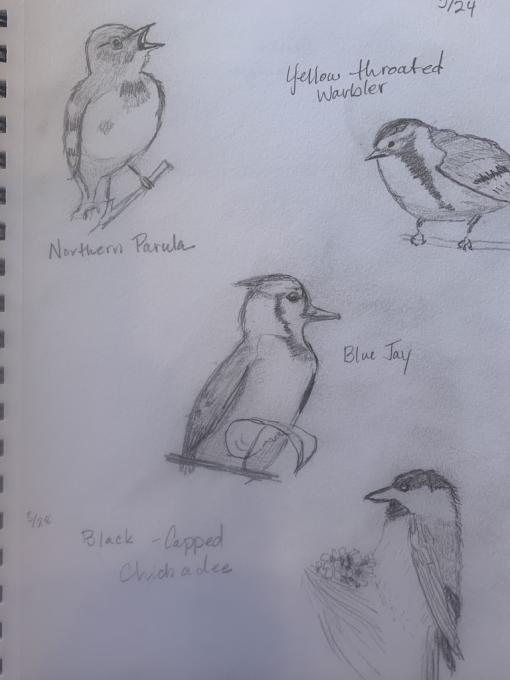 I am having trouble getting a 3 d look
I am having trouble getting a 3 d look  seed.
seed. 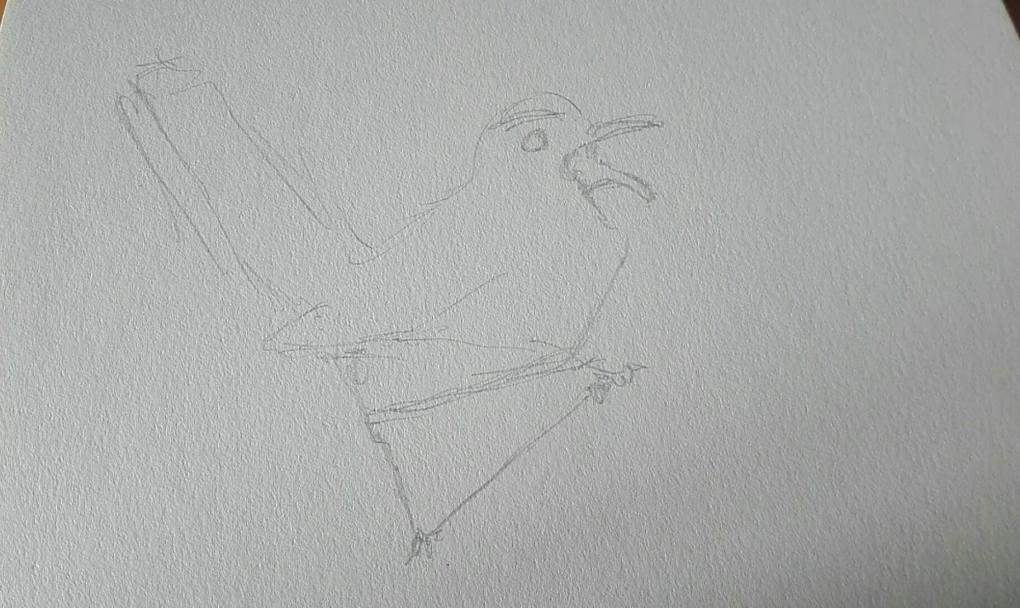
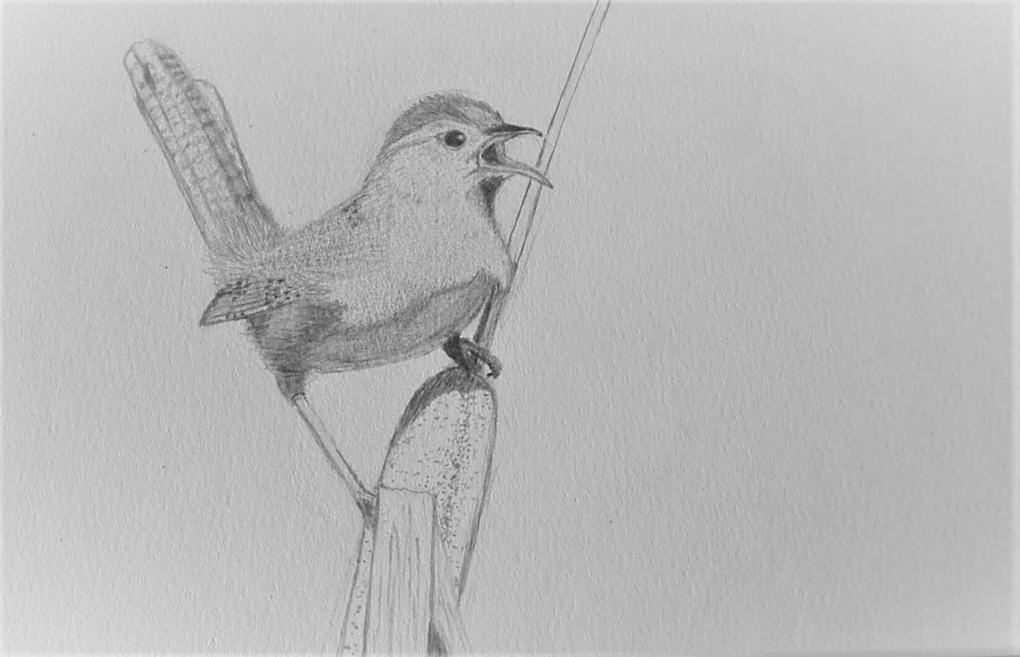
 This is actually two different exercises. The larger sketch was an attempt at proportion, while the more detailed woodpecker (a different species) is an attempt at demonstrating depth. I feel good about the proportion of the smaller drawing. Shading will come, in time. I'm having difficulties concentrating on two different skills at one time.
This is actually two different exercises. The larger sketch was an attempt at proportion, while the more detailed woodpecker (a different species) is an attempt at demonstrating depth. I feel good about the proportion of the smaller drawing. Shading will come, in time. I'm having difficulties concentrating on two different skills at one time. 
![IMG_7458[1]](https://academy.allaboutbirds.org/wp-content/uploads/hm_bbpui/669370/Tslhz9d6zejforzx81wrrv68z6afyanmp.jpg)
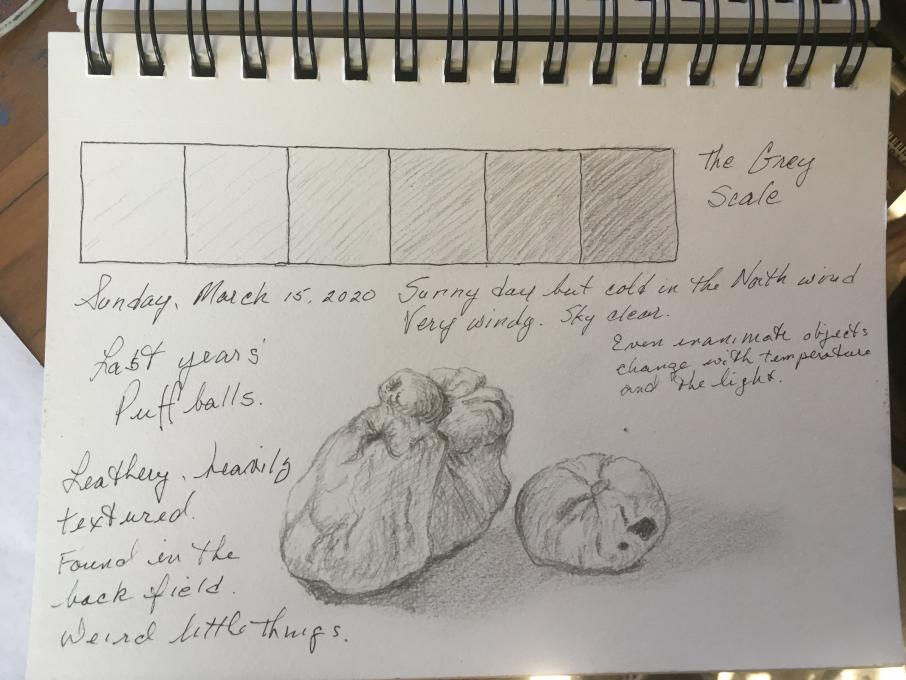 Today’s exercise. I am having some difficulty drawing at such a small scale but getting there. This subject was heavily textured so the texture and the shading techniques were getting mixed up.
Today’s exercise. I am having some difficulty drawing at such a small scale but getting there. This subject was heavily textured so the texture and the shading techniques were getting mixed up. 